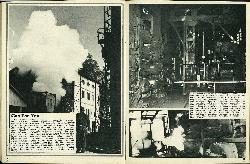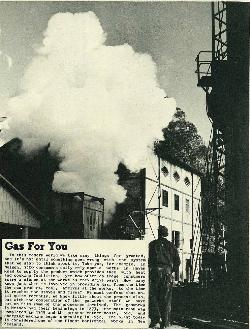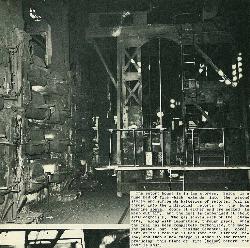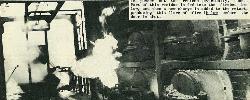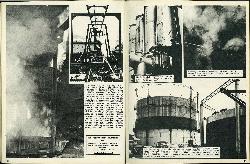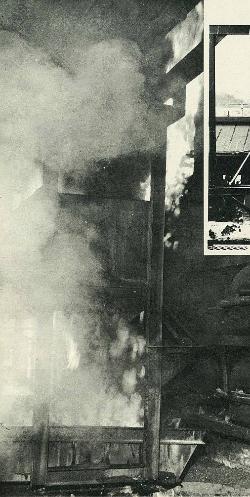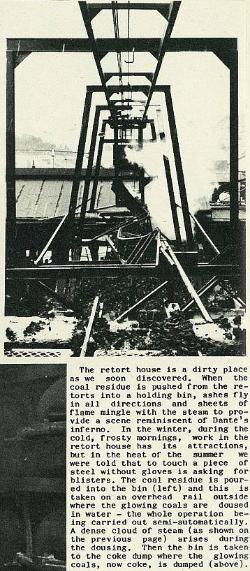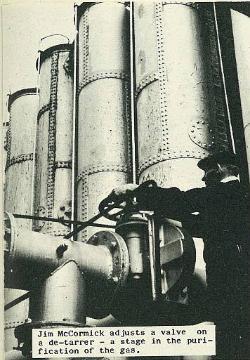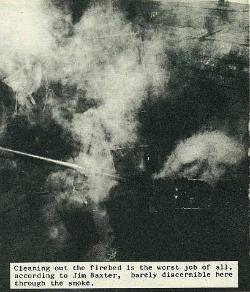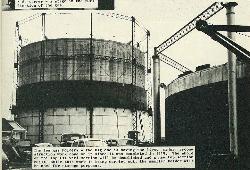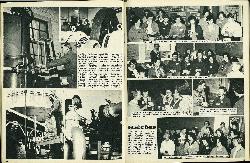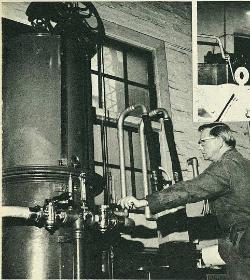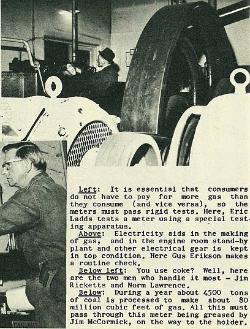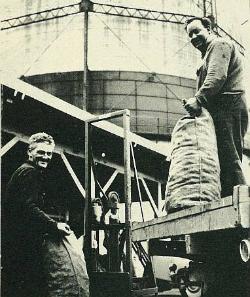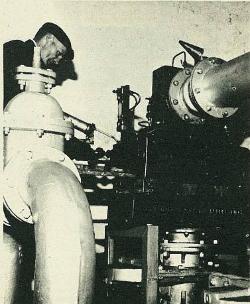40
Gas for You
In this modem world we take many things for granted, and it's not until something goes wrong with the system that we stop to think about it. Take gas, for example. In Nelson, 3300 consumers daily rely upon a works in Haven Road to supply the product which provides them with heat and cooking facilities, yet how often do these consumers spare a glance at the works as they drive past? How many know just what is involved in providing gas, from the time the raw product, coal, arrives at the works, to the time it reaches the stoves and fires? We must confess that until quite recently, we knew little about the process also, but with the cooperation of the gasworks staff we have put on film some of the processes involved. The gasworks in Nelson had their beginnings in 1873, the main tank was completed in 1919 and the present retort house, bed, and charging machine began operating in 1932. The plant today is considered one of the finest horizontal works in New Zealand.
41
The retort house is in two storeys. Below is a huge bed of fire which extends into the second storey and surrounds batteries of retorts. Coal is thrust into the individual retorts by the huge machine above, doors at either end are sealed to keep out air, and the coal is carbonised at about 1200 degrees F. The gas leaves each of the chambers, along with impurities, through pipes. When the coal has been completely carbonised, the machine pushes out the residue (eventually, coke). Part of this residue is fed into the firebed below, and then a new charge is added to the retort, producing this flare of fire (below) before the door is shut.
42
The retort house is a dirty place as we soon discovered. When the coal residue is pushed from the retorts into a holding bin, ashes fly in all directions and sheets of flame mingle with the steam to provide a scene reminiscent of Dante's inferno. In the winter, during the cold, frosty mornings, work in the retort house has its attractions, but in the heat of the summer we were told that to touch a piece of steel without gloves is asking for blisters. The coal residue is poured into the bin (left) and this is taken on an overhead rail outside where the glowing coals are doused in water – the whole operation being carried out semi-automatically. A dense cloud of steam (as shown on the previous page) arises during the dousing. Then the bin is taken to the coke dump where the glowing coals, now coke, is dumped (above).
All "Photo News" Magazins
for
Gisborne, Tauranga, Rotorua, New Plymouth, Whangarei, and Wanganui
are available from:
Hounsells
43
Jim McCormick adjusts a valve on a de-tarrer - a stage in the purification of the gas.
Cleaning out the firebed is the worst job of all, according to Jim Baxter, barely discernible here through the smoke.
The two gas holders - the big one is having the first major reconstruction work done on it since it was completed in 1919. The whole of the top (silver) section will be demolished and a new top section built. While this work is being carried out, the smaller holder will be used for storage purposes.
44
It is essential that consumers do not have to pay for more gas than they consume (and vice versa), so the meters must pass rigid tests. Here, Eric Ladds tests a meter using a special testing apparatus.
Electricity aids in the making of gas, and in the engine room stand-by plant and other electrical gear is kept in top condition. Here Gus Erikson makes a routine check.
You use coke? Well, here are the two men who handle it most - Jim Ricketts and Norm Lawrence.
During a year about 4500 tons of coal is processed to make about 80 million cubic feet of gas. All this must pass through this meter being greased by Jim McCormick, on the way to the holder.


